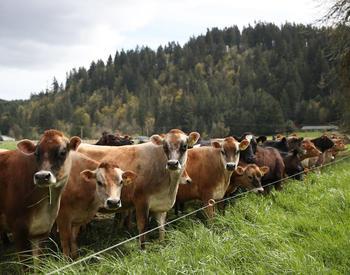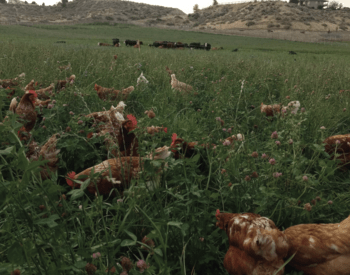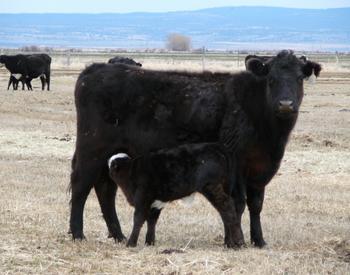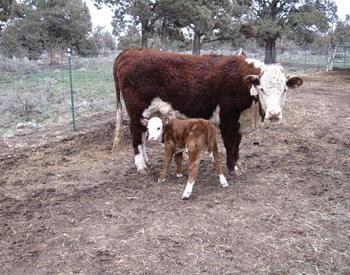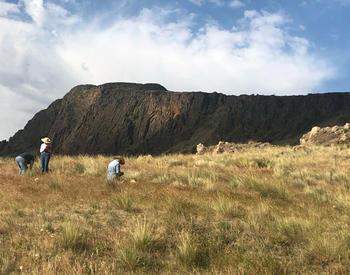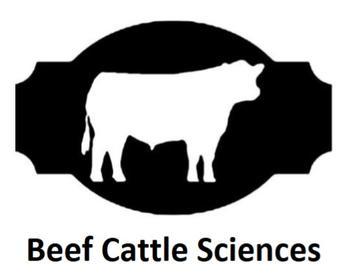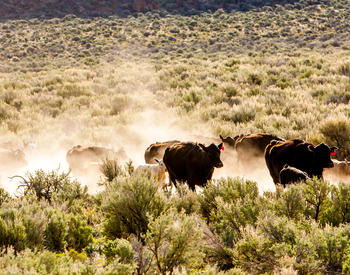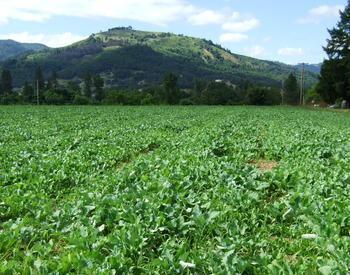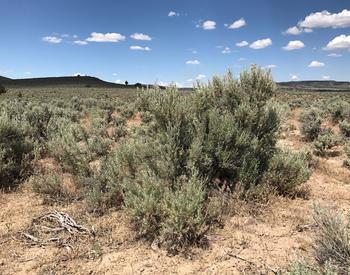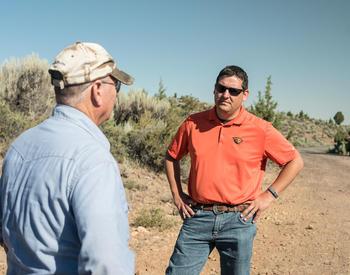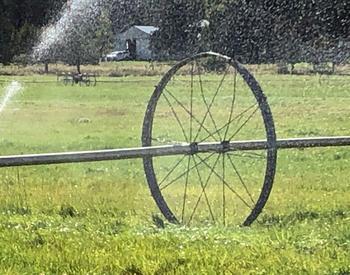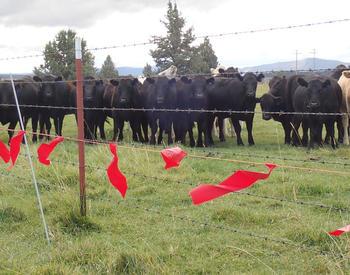Raising and finishing calves for home harvest can be rewarding, but there are several things to consider so that the process is efficient and the meat is excellent. The type and weight of calf, time of year to purchase, purchase price, rate of weight gain, feeding methods and harvest date all need to be carefully planned so that the animal can be fed properly to meet your goals. This article discusses a few of the important factors about which I get many questions from people wanting to buy calves and finish them at home.
Depending on where in Oregon you are raising the calves, there will be different scenarios for cattle and forage resources. These may differ from the ones described below. However, the principles of cattle type, total gain necessary or rates of gain at different times over the growing period are similar, if not the same. Try to visualize how the methods presented can be used in your specific conditions so that you are proactive in managing your cattle.
Calves come in many sizes and shapes. Small-framed cattle will be ready for harvest at a lighter weight and with fewer days on feed than medium- or large-framed cattle. Calculate frame size from hip height and age using tables or online calculators. You should choose calves that have good beef character with a lot of muscling ability verses calves that have a lot of dairy character.
If you purchase calves in the fall of the year, the cost will be at a seasonal low because many cow-calf producers wean their calves in the fall and the market is flooded with a large supply. Conversely, we see prices at a seasonal high in the spring because few producers fall calve/spring wean their cattle.
Most weaned calves will weigh about 400 to 500 pounds. Try to get individual weights on the animals you purchase. The price per pound is higher for these lightweight calves compared to older calves in the 700 to 800 pound range. But if you purchase an older, heavier calf it will cost you more total dollars to do so. Someone else has put that extra weight on the animal.
Select a target weight at which your beef animal will be ready for harvest. That weight should depend on its frame size and sex (See figure 1. Frame Size and Weight to Grade Choice). Then use the current and target weight to calculate the total weight gain needed.
Next, decide on an expected harvest date. You want the calf to develop muscle and lay down a proper amount of fat at a relatively early age so that the carcass is acceptable and the meat is tender. Your job will be to feed and manage the calf so that it grows and finishes around 20 months of age. If it is grass finished, 18.3 months is a suggested target age. You may grow cattle to an older age, but there is significant risk of decreased tenderness if harvested over 30 months of age.
Determine the rate of gain over the growing and finishing period. Rate of gain (pounds per day) does not have to be the same over the entire period; it just needs to be positive gain especially at the end. To calculate the average daily gain (ADG), divide total pounds of gain needed by the number of days until you will harvest. This is the number of pounds per day the cattle need to gain in order to reach the goals you set for it.
For example, if the starting weight of a steer is 515 pounds and the target weight is 1,200 pounds, then the total weight gain needed is 685 pounds. If the beginning of the feeding period is November 1 and the target finish date is November the following year, there will be 365 days to gain the desired weight. Average daily gain would need to be about 2 pounds per day. That is, ADG = 685 lb / 365 days = 1.9 lb / day. If the calf were born in March, it would be 8 months old in November of the first year and 20 months old in November of the second year.
A typical scenario with growing calves in Oregon is where they are grazed on fall pastures, overwintered on harvested forages (good quality hay or balage) where they gain at a slow rate (a half-pound per day), then turned out weighing about 600 pounds onto nonirrigated, spring pastures to take advantage of abundant, high quality forages. Here they gain an average of 2.5 pounds per day, but the daily gain can range anywhere between 1.0 and 4.0 pounds depending on the month.
When the spring grass dries up, they often weigh about 750 pounds. These stocker cattle are normally sold to a feed lot where they are finished in about 90 to 120 days on a ration consisting of grain plus protein supplements and hay to keep their rumen functioning well.
However, if we keep these 750 pound calves at home to finish out ourselves, we have work to do. At this point in our scenario it is summertime and there are about 150 days to gain the 450 pounds to reach a target weight of 1,200 pounds. Calculate that out and you will find the cattle need to gain 3 pounds per day at a time when the grass is dry and weather is hot.
Therefore, we see that a different approach is necessary to reach our goals. One option is to give the cattle more time to gain the weight, but that means carrying them over another year and having issues with meat tenderness. Another option is to feed a high energy, good protein ration so the cattle can make these large gains. It would take irrigated pasture and/or supplements such as grain and seed meals. This is expensive and may be difficult to do in the heat of the summer.
A third option is to choose small framed cattle to finish at a lighter weight (1,100 pounds) and earlier date and to improve the gain over the first winter. This can be done by feeding fall and winter rations to increase the usual rate of gain from one-half pound per day to about 1 pound per day. That way the calf is closer to 875 pounds at the beginning of summer and only needs to gain 225 pounds to reach target weight in 150 days (June to November). Calculate that out and find that the rate of gain is now less than 1.5 pounds per day. This is more realistic than the previous scenario.
A set of scales in an important asset so you can track progress and make any necessary changes to livestock rations so that the goal weights are reached. If you do not have your own scales, you might be able to take cattle to community scales or get mobile scales to your cattle.
However, you may be able to reach your target weight without scales. Target weight is just a tool to help you properly finish cattle of certain frame scores. Hopefully you have estimated gain and fed properly and gotten close to your goals. Either way you could just keep feeding until the cattle are sufficiently fattened. You may assess this visually or by feeling for back fat thickness.
With any of the various ways and means of putting weight on our cattle it is a challenge to figure out how to do it properly so that the finished product is what we want and when we want it. The process is a welcome task though for those of us who enjoy feeding and watching our animals grow.
Please contact me or another Extension faculty if you need assistance with balancing rations to improve fall and winter gains. See our Beef Nutrition Workbook for specifics on animal nutrient requirements for growing and finishing animals.
Consider planting some drought tolerant or extended-season forages. This will help increase the rate of gain over the summer and into the fall seasons. Researchers at Oregon State University and private individuals are digging deep into forage-livestock scenarios and already have some good suggestions for you. Look for future articles on this topic. Good luck growing and finishing your calves!
Look for related material by searching for "meat."

